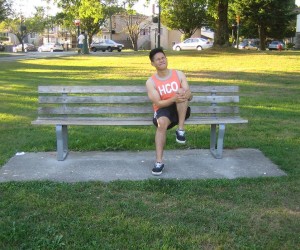Osteoarthritis is considered as a type of degenerative joint pain triggered by wear and tear on the joints. As an individual starts to age, the cartilage that cushions the joints start to wear down, thus causing the bones to rub against each other. This action will later on lead to joint inflammation.
It is important to note that osteoarthritis typically affects the joints in the legs and arms including the wrists, fingers, ankles, hips and knees. In addition, the lower back is also a usual source of pain. A doctor must be informed if the individual experiences the early symptoms of osteoarthritis.
Pain and tenderness
Those who have arthritis typically suffer from aching back, knees, hips and neck. The pain during early osteoarthritis can be categorized in two ways – pain and tenderness. The individual might feel a piercing pain when moving the affected joint in a certain way.

The tenderness is the discomfort felt when pressing down on the joint. The tenderness can also include evident swelling in the area of the joint but this is quite common in the advanced stages of osteoarthritis. The early symptoms can cover one or both types of pain. By enrolling in a first aid class, you can learn pain management measures for pain relief.
Stiffness of the joint
The joint pain is accompanied by stiffness. The stiffness is normal when waking up in the morning or when sitting for extended periods. Remember that it is also an early indication of osteoarthritis. This stiffness will cause the individual to feel sluggish and urge him/her to go to bed, but this must be avoided. Individuals who have arthritis often start to feel better once the joints have been warmed up with mild exercise or simply performing daily routines around the house.
Unusual sensations
The cartilage is responsible for absorbing shock so that the joints can move smoothly. Once the cartilage wears down, the bone rubbing will lead to unusual sensations. Take note that the grating sensation of the joints is common among those who have osteoarthritis. In some cases, the individual can feel or hear the joint clicking or cracking when moving.
Loss of flexibility
During the early stage of osteoarthritis, some will notice that moving the affected area is not easy than in the past. The joint pain and stiffness can contribute to the loss of flexibility or diminished range of motion. When an individual has arthritis, he/she might not be able to bend the knee as far. Just remember that the loss of flexibility is a gradual process.
What is going on?
During the early stage of osteoarthritis, the cartilage in between the joints become worn and torn or even inflamed. This inflammation leads to the swelling of the cartilage which causes irritation and pain. The wear-and-tear will cause the loss of water in the joint which leads to the hardening of the cartilage. Take note that the hardened cartilage contributes to the difficulty in moving the joint. Remember that the loss of cartilage is a slow process.
